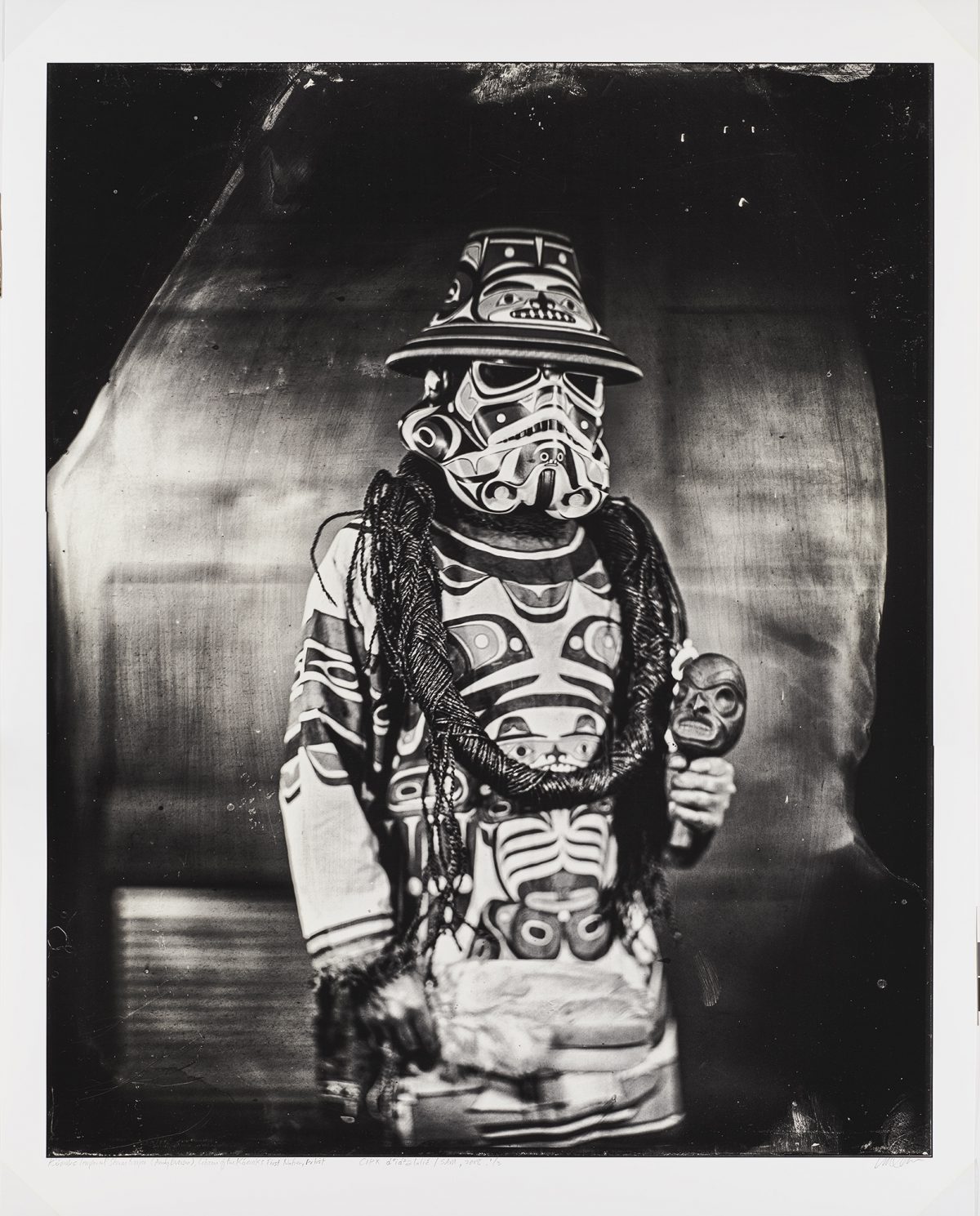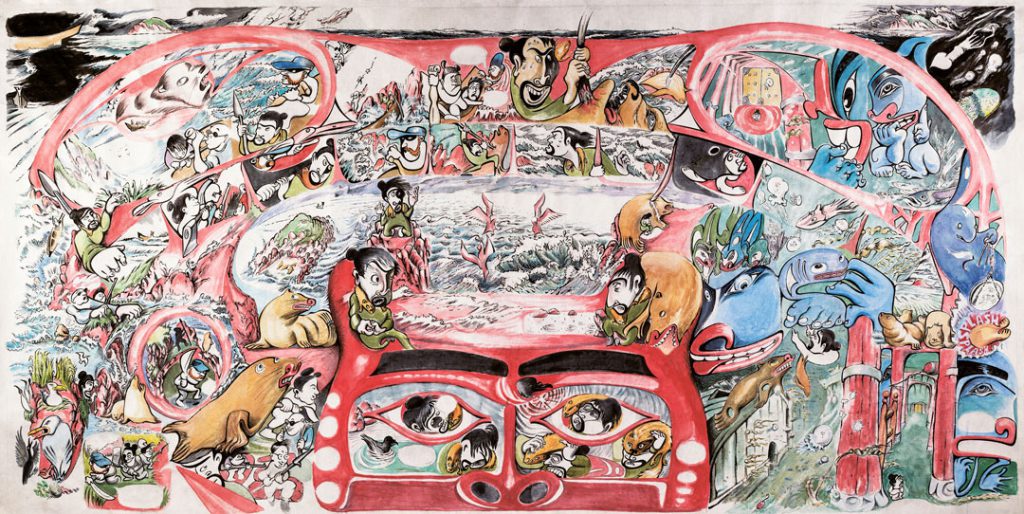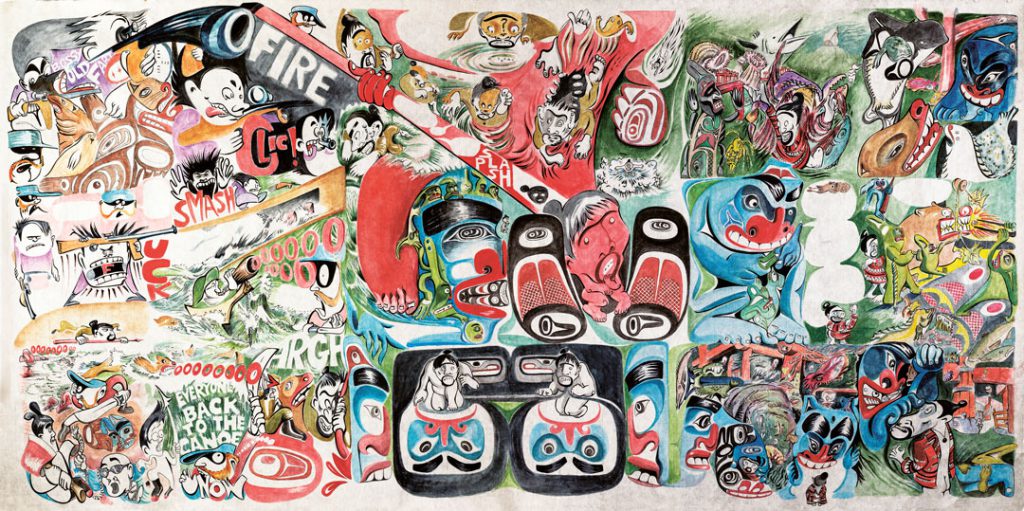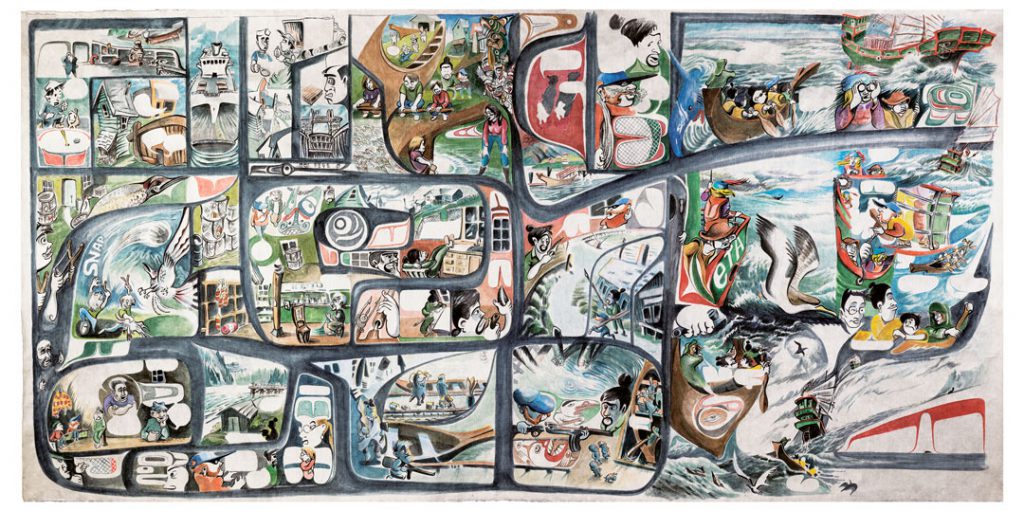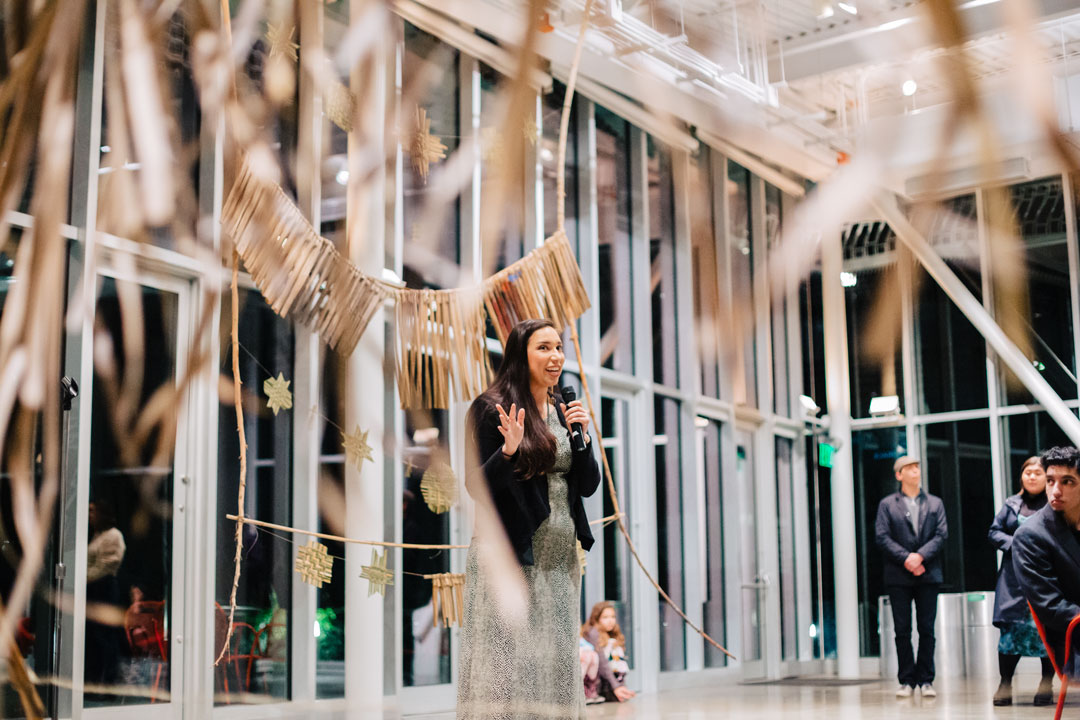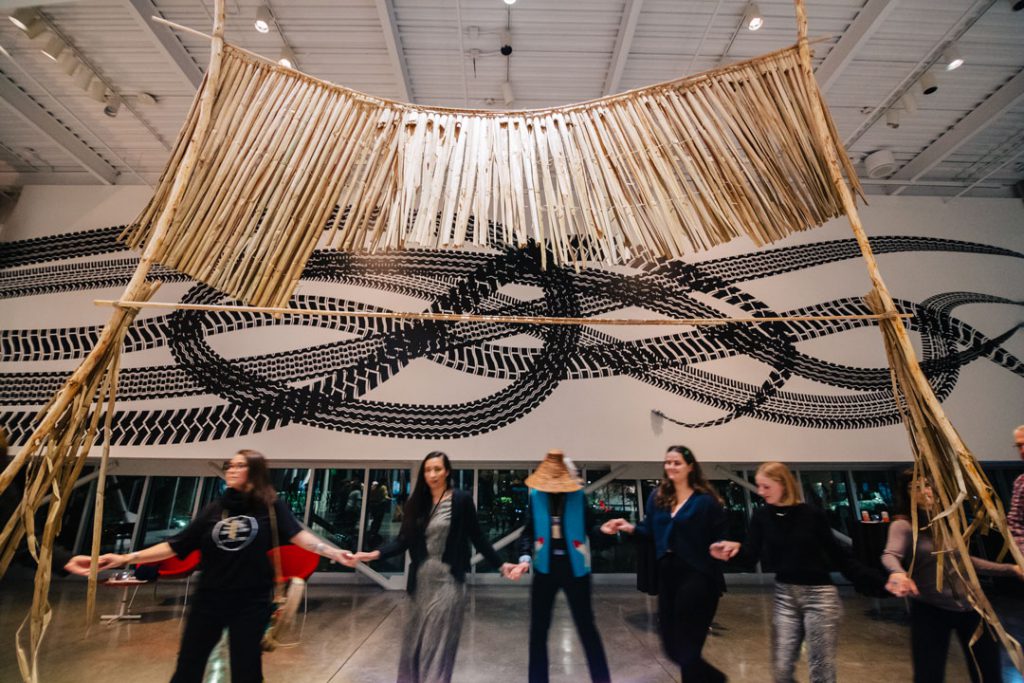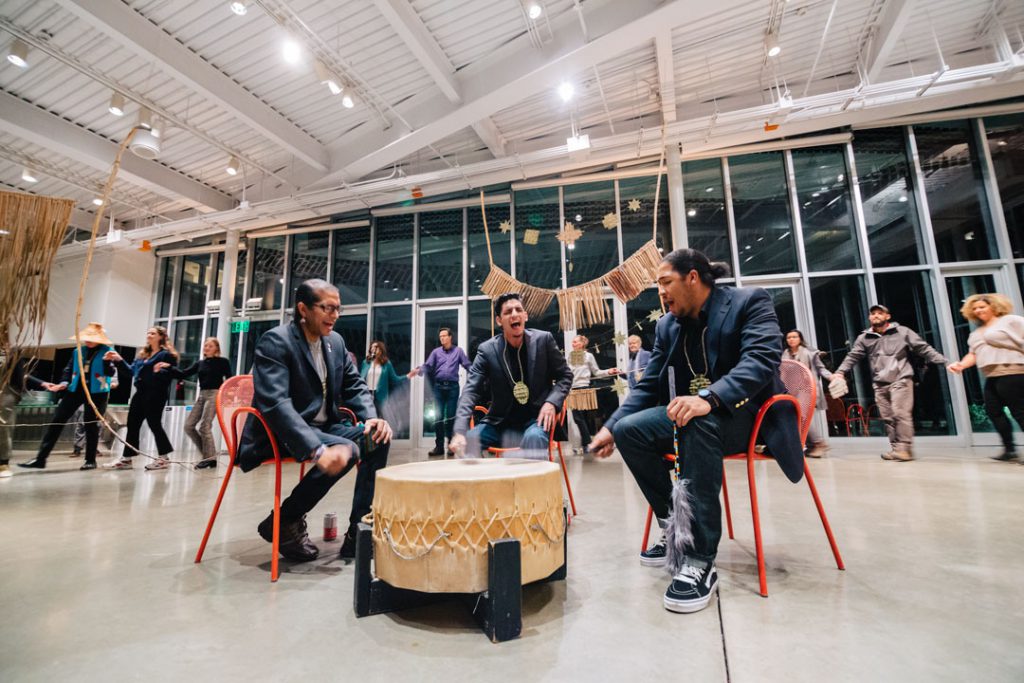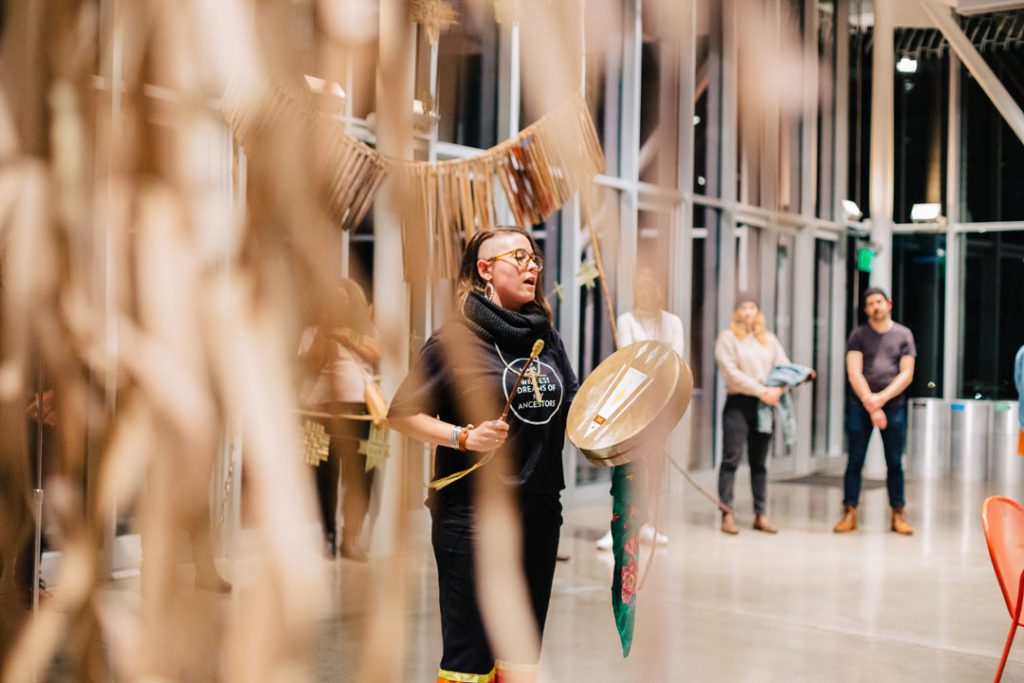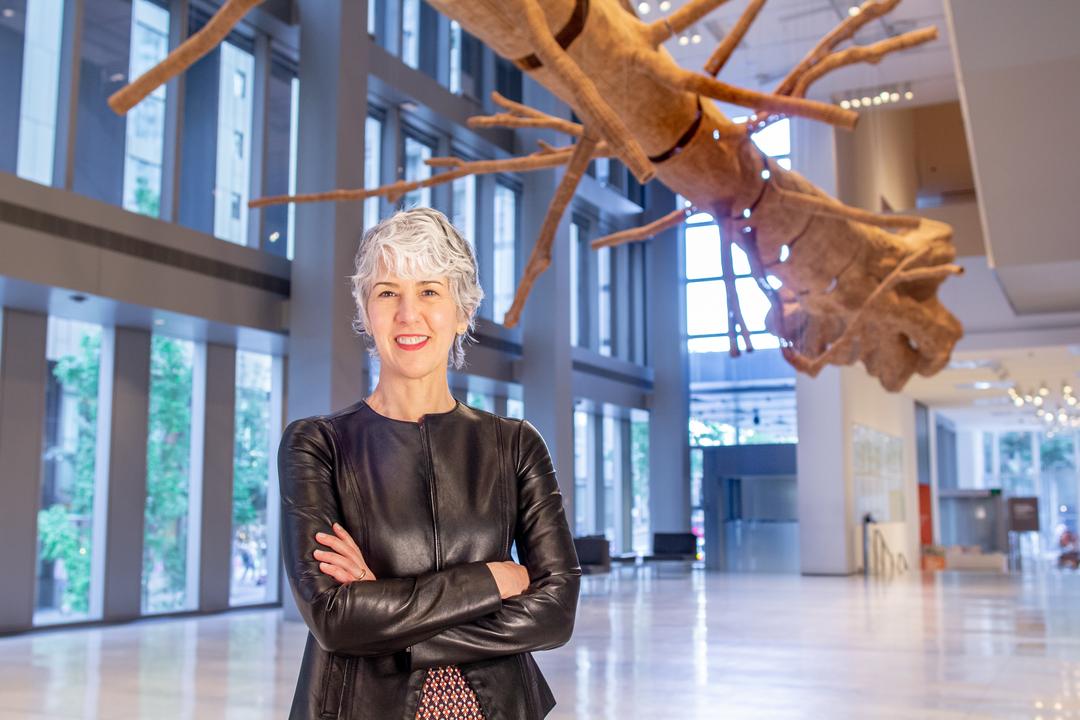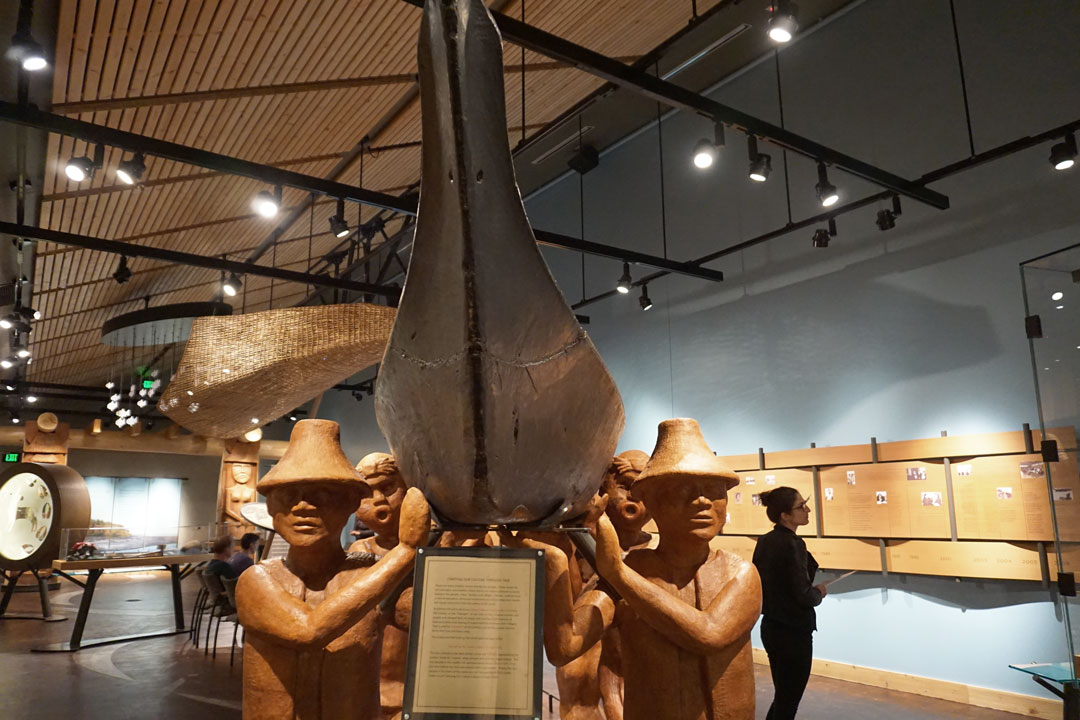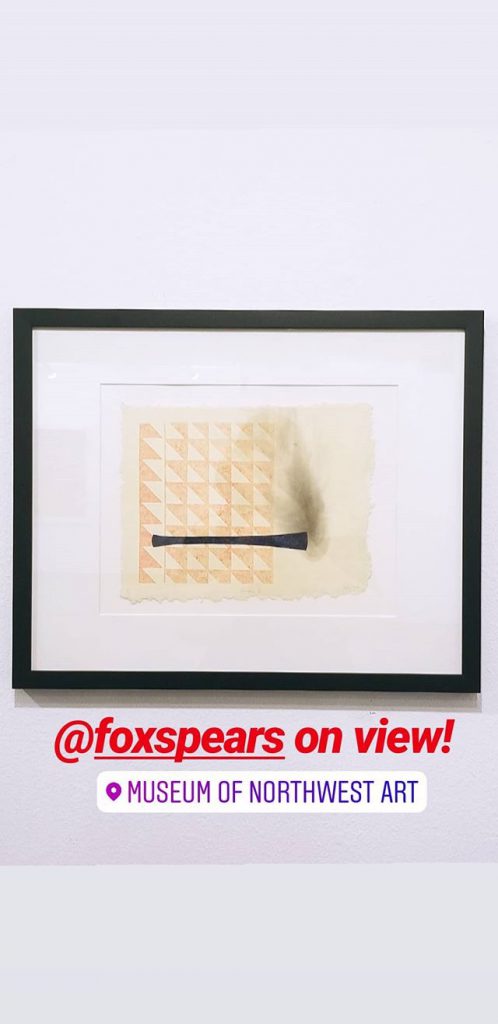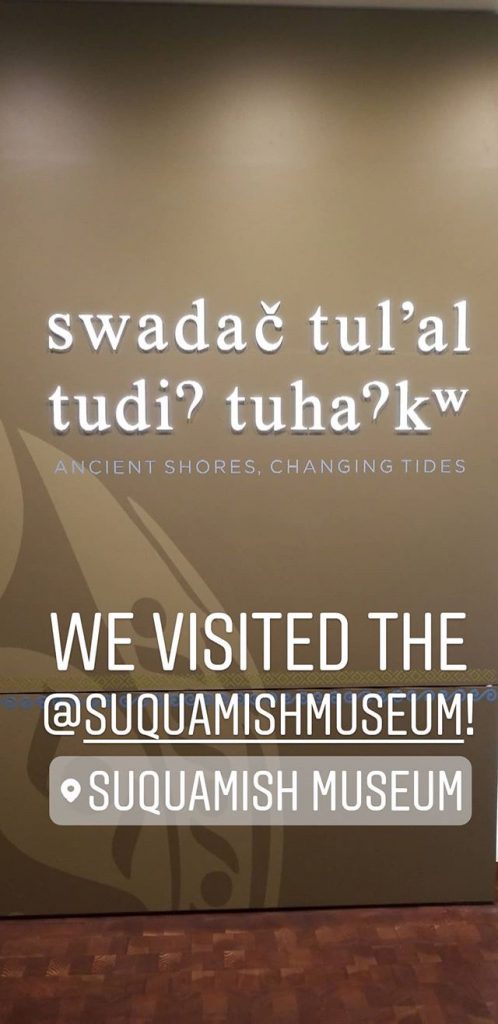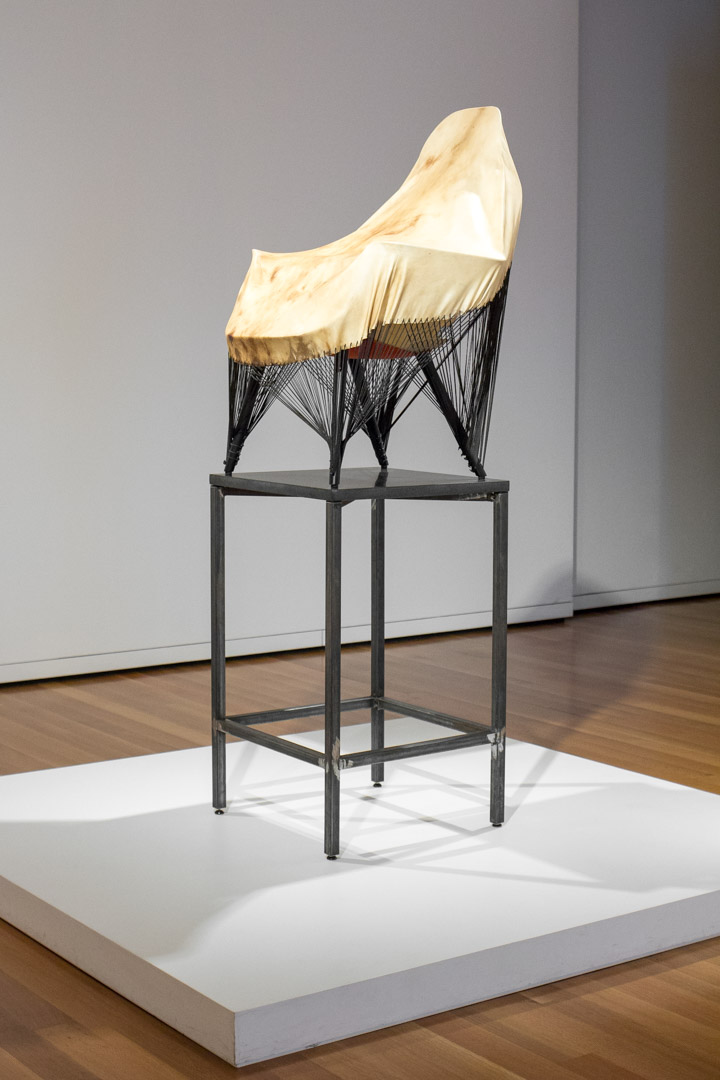Object of the Week: K’ómoks Imperial Stormtrooper
I would like to acknowledge that the museum sits on the Indigenous land of the Coast Salish People in and around the city of dᶻidᶻəlalič (renamed Seattle for Chief siʔaɫ).
My work is a response to the ways in which photography has been used as a mechanism of colonization. Decolonizing photography for the use of American Indians has to occur through the articulation of a Native representational subjectivity. In the place of colonizing representation, I want to produce images and sensory experiences that convey representation of, by, and for American Indians.
– Will Wilson
Since 2012, Will Wilson has put cultural sovereignty at the root of image-making events he calls the Critical Indigenous Photographic Exchange (CIPX). The thousands of images created over the course of this project now comprise the largest Indigenous created archive of images of Native peoples. These photo sessions—in which Wilson uses an old wet-plate technology to produce tintypes—are held in tribal communities and at urban institutions such as museums. Wilson’s CIPX event at the Seattle Art Museum, which took place in November 2017, centered on capturing the rich complexity of Native peoples living in the environs of Seattle, members of local reservation-based tribes, and “urban Indians” who came to Seattle from other places. Wilson invites anyone who wants to be photographed to present themselves however they want—wearing what they choose, holding objects that are important to them, and posing to their liking. As part of the exchange, he gives the tintype to the sitter while asking for permission to digitize the image for use in large-scale prints, like the work in SAM’s collection, K’ómoks Imperial Stormtrooper (Andy Everson). It is an amazing process to witness and reminds us that, for those who take authority over the processes of representation, methodologies and interpersonal exchanges matter.1
The sitter in this portrait is K’ómoks First Nation’s artist Andy Everson. His recent work draws from his two passions: Indigenous art and Star Wars. He transformed the stormtrooper into a positive figure by doing away with the uniform’s whiteness and covering it with formline designs. Everson wanted to change the stormtrooper from someone who blindly follows instructions from his higher-ups to someone who is able to take action for himself and for his own people. And so began this idea of the West Coast warrior, a defender of the land.2
Chilkat weavers were the inspiration for Everson when he created the Northern Warrior (2015), with its distinctive yellow, blue, white, and black colors. He also replaced the stormtrooper’s helmet with a traditional conical hat, made out of maple wood that his ancestors in Alaska would have worn.3 Many of his ancestors were warriors, and when their territory was threatened they did not hesitate to defend themselves. When they entered battle, they wore slatted armor suits and hard wooden helmets carved with their crest, proudly representing their ancestral lineage. The hat on this helmet displays the Kwakwaka’wakw crest of the sisiyutł—the double-headed serpent. This symbol of the warrior reminds us of the dichotomies in life—good and evil, right and wrong—and puts a human face in the middle to teach us that we must choose where we stand.4
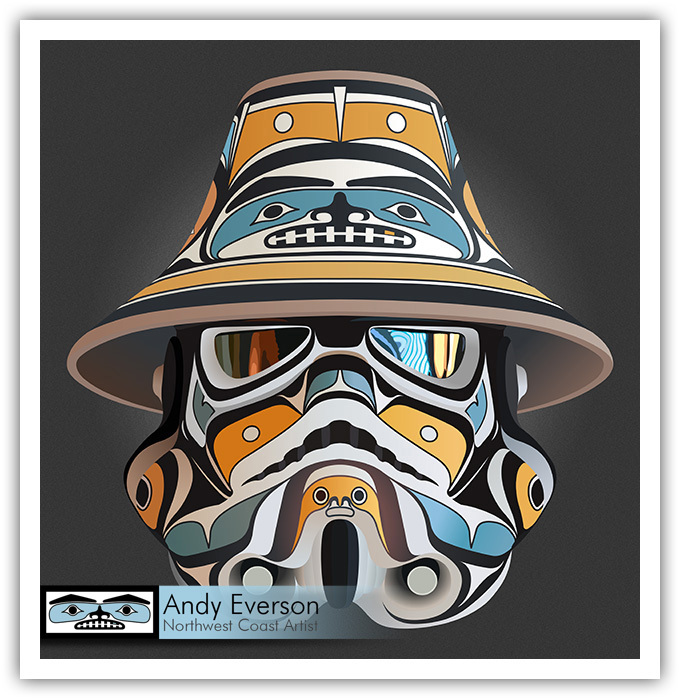
Everson’s stormtroopers tell a story to both Indigenous and non-Indigenous peoples about the importance of a warrior spirit. The works speak to the histories of Indigenous resistance and defiance in opposition to colonizing forces, and the importance of remaining steadfast in the face of adaptation and change.5 Like Wilson’s CIPX series, Everson’s stormtroopers draw people in with its familiar figure and invite people to engage with an art form, perhaps unfamiliar to some, that ultimately fosters a new kind of cultural exchange.
Speaking of stormtroopers, don’t miss the premiere of The Mandalorian season two on October 30. Will we find out Baby Yoda’s origin? Are there more of them? I hope so, and I hope you all have a safe and happy Halloween!
“I would like to see the baby.” – The Client, The Mandalorian
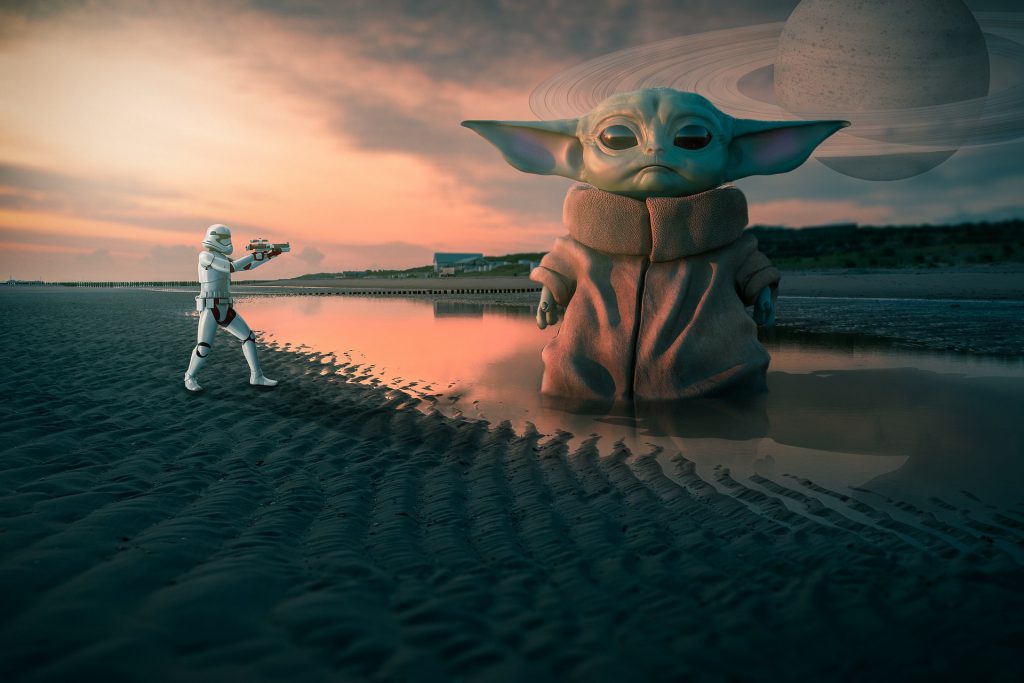
– Tina Lee, SAM Exhibitions and Publications Manager
